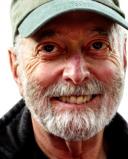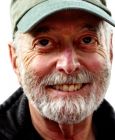Attention
Slow Movement with Awareness: Better Than Exercise?
How you move is as important as how much you move.
Posted July 6, 2010 Reviewed by Jessica Schrader

Cardiovascular exercise is now known to be essential for health and well-being. If exercise is your only form of movement, however, it is not a very balanced diet. There is mounting evidence that slow movement, with body sense awareness, has astounding health benefits by itself and in combination with regular exercise routines.
According to a recent article in the Los Angeles times, there are a growing number of pain clinics and integrative medicine centers that offer slow movement, awareness-based therapies (like hatha yoga and tai chi) for pain in a wide variety of conditions including "pain caused by cancer and cancer treatments, rheumatoid arthritis, fibromyalgia, multiple sclerosis, and other diseases and conditions." Throw away the pills? Stop getting injections? Scrap the pain management therapy groups? Stop the sweaty workouts? Maybe not entirely, but regular slow movement classes are increasingly seen as having essential "nutrients" for the body.
Compared to a standard care control group, people with chronic low back pain who took 12 weeks of hatha yoga classes had less pain, depression, and disability and reported greater overall improvement in quality of life. Similarly, 12 weeks of tai chi has been shown to relieve the symptoms of rheumatoid arthritis, including less pain and stress, more body awareness, and more confidence in moving. A literature search on Google scholar turned up many more studies like these.
Some pain clinics have been sufficiently impressed with these findings to fit some kind of slow movement practice into their treatment protocols. But why do they work? It is difficult to argue that the general benefits of cardiovascular exercise for health and well being extend to slow and deliberate practices like hatha yoga and tai chi. Some experts suggest that these slow methods instead increase the parasympathetic relaxation response which in turn reduces the stress response, promotes immune function that inhibits inflammation and stimulates healing.
This is all correct but there is one element missing in these accounts: the role of body sense. As I have written in this blog and elsewhere, links between parasympathetic and immune systems are amplified and strengthened via neural circuitry that connects peripheral sensors and effectors in the body with brain-based limbic-prefrontal-sensorimotor networks for embodied self-awareness (body sense) and self-regulatory prefrontal areas. Moving slowly and with awareness promotes all of these benefits. Cardiovascular exercise with body sense has more benefits than exercising while otherwise preoccupied. Interval exercise, with frequent rest periods giving time to pay attention to the body, has benefits over and above long workouts. Slow movement is like Slow Food in which all acts related to eating—shopping, preparing, ingesting, and digesting - are done with awareness and presence.
Paying attention to the body is like shining a direct spotlight on areas of pain. Not such a great idea, to focus on pain? Actually, it is the best cure for pain because the attention spotlight helps to direct the body's own healing resources to the affected areas. Body sense is medicine. It is nature's perfect blend of psyche and soma in which the practice of attention regulation promoted by slow movement practices combines with the body's readiness to direct its resources toward healing. It can only do that if we reduce stress, slow down, and pay attention.
Aside from the legacy slow movement practices of yoga, tai chi, qi gong, aikido, and others, there are many movement practices, a few of which are mentioned here, that were developed in the 20th century and that also lend themselves to similar psychophysiological effects. Moshe Feldenkrais invented a system of body movement education—the Feldenkrais method—that reawakens, develops, and organizes capacities for kinesthetic (sensorimotor) learning. Whereas children before the age of three learn movements by relying on their sensorimotor experience, older children and adults in technological cultures often behave according to social expectations, distancing themselves from their bodily feelings. Feldenkrais "Awareness through Movement" classes teach moving with awareness and ease.
The freeform movement of Modern Dance, and observations of infant movement, inspired other movement disciplines, and modern dance classes are readily available for novices as well as experts. Bodymind centering, created by dance teacher and physical therapist, Bonnie Bainbridge Cohen, is a method of movement awareness in which adults perform exercises based on the normal stages of infant sensorimotor development. In this way, clients can reconnect with their body sense and possibilities for self-discovery that may have been lost as they grew up.
Marion Rosen developed a method of movement awareness that is also based on physical therapy and modern dance approaches. A Rosen Movement class involves a series of gentle movements done to music. Some of the movements and postures are done with people standing in a circle, either with or without holding onto their neighbors. Other movements are done sitting or lying, or walking across the floor, sometimes with and sometimes without partners.
Other exercises allow a person to move their arms up and down, for example, while a partner gently touches their shoulder blades, enhancing the body sense awareness of how the shoulder blade moves in relation to the arm. Rosen Movement increases flexibility, opens the posture for co-regulated engagement with others, emphasizes embodied self-awareness and the joy of movement, and teaches about finding comfort and enjoyment in touching and moving with other people. Feldenkrais, Rosen, and Cohen also developed hands-on bodywork methods that are similarly meant to enhance the body sense.
NIA, or Neuromuscular Integrative Action, developed by Debbie and Carlos Rosas, is more active than the other practices mentioned here. It combines a cardiovascular workout with movement awareness and is done barefoot to music. NIA uses elements of tai chi, aikido, modern dance, Feldenkrais, and yoga, among other methods. Using the sounds and silences of music, students experience feeling the sense of joy in movement in a way that encourages an embodied self-awareness of agility, mobility, stability, flexibility, and strength. NIA teachers encourage students to actively listen, feel, and observe their bodies in motion.
Aquatic versions of all these methods can be done and are sometimes offered as classes. After you've sampled some different approaches, you can create your own practice by combining movements from different methods into your daily routine. You can move while you do your household chores or in a dedicated session. You can opt for music or silence, land or water, standing or sitting or lying down. Move slowly and with awareness of sensations from muscles and joints, postural sway and stability, and any emotional feelings that these movements bring up for you. Rest frequently and let yourself feel the parasympathetic relaxation response (feelings of slowing down, presence, relaxed breathing, sighs, and perhaps tears of relief). Remember too that there are added health benefits to the social networking that is part of being a member of a movement class or group that meets regularly.
The most important factor is that the practice appeals to you, that you enjoy going to the classes or doing the movement on your own, and that you feel enlivened when you get done. Don't get discouraged if you find you are sometimes more aware of your physical pain and emotional pain like sadness, anger, or grief. That's part of the process of expanding your sense of yourself as alive in your own body. As you continue the practice, your pain tolerance will increase, your felt pain will decrease and fold into a clearer, happier, more complete, and more functional you.




